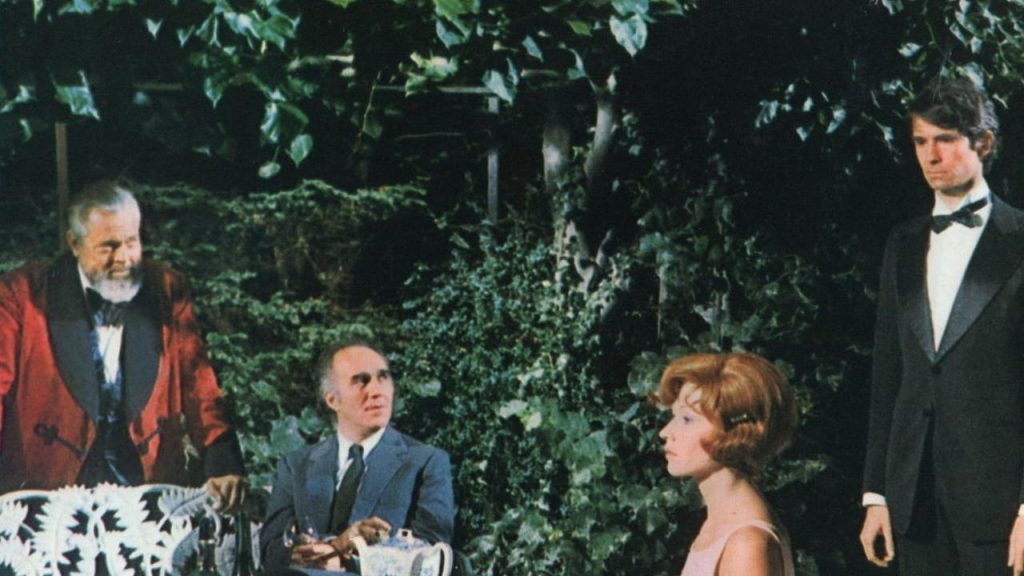
Claude Chabrol’s film Ten Days’ Wonder (1971) is about a young man named Charles (Anthony Perkins), his domineering father Theo (Orson Welles) and their romantic involvement with Helene (Marlene Jobert). Theo adopted both as his children, eventually marrying Jobert whilst Perkins falls in love with her himself. The narrative focuses on the “siblings” as they are blackmailed.
But the film is not significant for its plot alone. Rather, Chabrol has constructed the film as a formal analysis of Welles’ own filmic style. Casting Welles opposite Perkins is a direct reference to Welles’ own film The Trial which also starred both actors. Drawing from The Trial’s shot compositions, Ten Days’ Wonder opens with slanted angles that only increase with their severity as Perkins washes the blood from his hands. Framing Perkins this way intentionally calls to mind the Freudian implications of Welles’ style in The Trial, forcing the audience to assess the character Charles of Ten Days’ Wonder in direct correlation with Josef K. of The Trial. This parallel is only reinforced by the relationship between the Welles characters and the Perkins characters in both films.
One may dismiss these parallels as simply an homage paid to Welles, but Chabrol pursues the cinema of Welles for analysis throughout the film. Effortlessly, Chabrol works numerous crane shots, reminiscent of Welles’ Touch Of Evil, into his film. Where the emphasis for Welles in Touch Of Evil was mise en scene, Chabrol takes a minimal approach, highlighting the gesture itself over the content. It is as if, through Ten Days Wonder, Chabrol is inviting his audience to reassess the cinema of Welles, which at the time largely ignored such later day masterworks as The Trial and Chimes At Midnight.
Chabrol adopts a direct approach to reflexivity, photographing his actors in dialogue addressing the camera directly. Chabrol cuts from these “dialogues” to various flashbacks (to which they are restricted as a precursor to). These flashbacks move in quick montages accompanied with voiceovers. The effect of this device disassociates the flashbacks from the narrative itself, complete with their own two-act structure, so that they exist as separate films within a much larger filmic complex. Each flashback is endowed with a single cinematic gesture of Welles’ as if to indicate that every individual film that a filmmaker makes is simply part of a greater whole.
The parts of the film I mention above are only a subtext running throughout Ten Days’ Wonder. The plot point of blackmail serves as a catalyst, launching Charles on a vendetta against his adoptive father Theo. At every turn, Charles breaks one of the ten commandments, replacing the God of the Bible with the father figure he has deified. Upon breaking each commandment, climaxing with the murder of Helene, Charles commits suicide.
The climax of violence and self destruction in Ten Days’ Wonder are hallmarks of Chabrol’s cinema. Theo is the puppeteer, providing every catalyst for Charles’ destructive behavior. So that in the end, Theo was playing God; just as he was deified by his adoptive children.
Chabrol does not neglect the narrative for a minute, insisting on finding the balance between art and commerce. That is, based upon my limited knowledge of Chabrol’s filmmaking career, the defining quality of his work.
